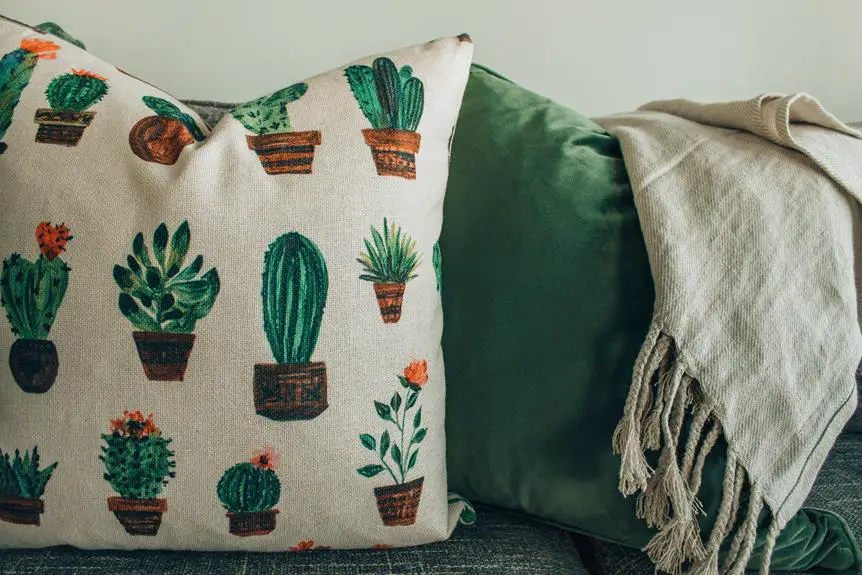Hey there!
Did you know that cotton is the most widely used natural fiber in the world, accounting for around 27% of all fiber production?
If you're wondering whether superglue can work wonders on repairing your favorite cotton fabrics, you've come to the right place.
In this guide, we'll explore the feasibility of using superglue to mend cotton materials, from understanding fabric composition to assessing the adhesion of superglue on cotton.
We'll also walk you through the steps for applying superglue to cotton and provide precautions to keep in mind.
By the end, you'll have a clear understanding of whether superglue is a viable solution for your cotton fabric repairs.
Let's dive in!
Key Takeaways
- Cotton fabric is breathable, soft, and comfortable to wear.
- Superglue can be used to mend small tears or holes in cotton fabric, but its adhesion strength is moderate.
- It is important to test superglue on a small, inconspicuous area before applying it to the fabric.
- Alternative methods for repairing cotton fabric include sewing and fabric glue.
Understanding Cotton Fabric Composition
You can understand cotton fabric composition by examining its fiber structure and properties. Cotton fabric is derived from the natural fibers of the cotton plant, making it breathable, soft, and comfortable to wear. The properties of cotton fabric include high absorbency, which allows it to retain water and dye well, resulting in vibrant colors. Additionally, cotton fabric is known for its durability and ability to withstand high temperatures. Understanding these properties is essential when considering repairing techniques with superglue.
When it comes to repairing cotton fabric with superglue, it's important to consider the fabric's properties. Superglue can be used to mend small tears or holes in cotton fabric due to its quick-drying and strong adhesive nature. However, it's crucial to apply the superglue sparingly to prevent stiffness in the fabric. Gently press the edges of the tear together and apply a small amount of superglue, allowing it to dry completely before wearing the garment.
Assessing Superglue Adhesion on Cotton
After understanding the properties of cotton fabric, it is important to assess how well superglue adheres to cotton when repairing tears or holes. When considering adhesion strength, fabric compatibility, long-term impact, and alternative methods, it's crucial to make an informed decision. Here's a table to help you understand the assessment of superglue adhesion on cotton:
| Factors to Consider | Assessment |
|---|---|
| Adhesion Strength | Moderate |
| Fabric Compatibility | Good |
| Long-term Impact | May degrade over time |
| Alternative Methods | Sewing, fabric glue |
The adhesion strength of superglue on cotton fabric is moderate. While it provides a quick fix, especially for small tears or holes, the long-term impact should be considered. Superglue may degrade over time, affecting the fabric's integrity. Additionally, it's essential to evaluate fabric compatibility. Cotton generally reacts well to superglue, but it's always wise to test on a small, inconspicuous area first. Lastly, consider alternative methods such as sewing or fabric glue for a more durable and long-lasting repair. Making an informed decision based on these assessments will ensure the best outcome for repairing cotton fabric.
Steps for Applying Superglue to Cotton
Once you have assessed the tear or hole in the cotton fabric, carefully apply a small amount of superglue along the edges, using a steady hand to ensure precise application. It's crucial to follow the correct steps when using superglue to repair cotton fabric to ensure the best results and longevity of the repair.
Here's how you can apply superglue to cotton fabric:
- Prepare the Area: Begin by cleaning the area around the tear or hole with a mild detergent to remove any dirt or debris. Ensure the fabric is completely dry before proceeding with the application of superglue.
- Apply Superglue: Gently squeeze the cotton fabric together, aligning the edges of the tear or hole. Using a precision applicator, apply a small amount of superglue along the edges. Be cautious not to use too much glue, as it can result in stiffness and discoloration of the fabric.
- Allow to Cure: After applying the superglue, hold the fabric in place for a few minutes to allow the glue to set. Once the superglue has dried, check the fabric for any excess glue and trim if necessary.
Precautions When Using Superglue on Fabric
When repairing fabric with superglue, exercise caution to avoid getting the adhesive on unintended areas, such as your skin or other parts of the fabric. Before applying the superglue, protect your skin by wearing gloves. Additionally, lay the fabric on a flat, protected surface to prevent accidental spills or leaks. It's important to ensure good ventilation to avoid inhaling the fumes from the glue.
When using superglue on fabric, be mindful of the long-term effects it may have on the material. Some fabrics may become stiff or discolored after applying superglue, so it's essential to consider whether the repair is worth the potential alteration in the fabric's texture or appearance. Always follow the manufacturer's instructions and warnings when using superglue to repair fabric.
Lastly, consider alternative methods for repairing fabric, such as fabric glue or iron-on patches, which may be gentler on the fabric and offer a more seamless, long-lasting repair. Taking these precautions and considering alternative repair methods will help you maintain the integrity and appearance of your fabric.
Testing Durability of Superglue Repairs
To determine the durability of your superglue fabric repair, you can conduct a simple test to assess its strength and longevity. Here's how to perform a durability testing and adhesion assessment:
- Wash Test: After allowing the superglue to cure for at least 24 hours, wash the fabric as you normally would. Use the recommended water temperature and laundry detergent. Inspect the repaired area for any signs of peeling, lifting, or weakening of the bond after the wash cycle.
- Stretch Test: Gently stretch the fabric in the repaired area. Check for any signs of cracking or separation in the glued area. A durable repair should maintain its integrity without any visible damage.
- Abrasion Test: Rub the repaired area against a rough surface to simulate everyday wear and tear. Examine the fabric for any signs of wear or detachment of the superglue bond.
Alternative Methods for Cotton Fabric Repair
Looking for alternative methods to repair your cotton fabrics?
Sewing provides a durable, traditional approach, whereas fabric patching techniques offer a quick and convenient solution.
Let's explore these options to find the best method for your fabric repair needs.
Sewing Vs. Superglue
Durability: Hand sewing provides a strong, long-lasting hold, especially when reinforced with multiple stitches. It allows for flexibility, making it ideal for repairing cotton fabric in areas that experience frequent movement.
Ease of Use: Superglue offers a quick and easy solution for small tears and frayed edges. It provides a fast bond, but may not withstand repeated washing and wear as well as hand sewing.
Versatility: Hand sewing allows for more intricate repairs and can seamlessly blend into the fabric, while superglue is best suited for quick fixes and bonding fabrics together.
Both methods have their benefits, so choose based on the specific needs of your cotton fabric repair.
Fabric Patching Techniques
You can explore various fabric patching techniques as alternative methods for repairing cotton fabric. Two common methods are using iron-on patches or darning.
Iron-on patches are convenient and easy to use, requiring only an iron to bond the patch to the fabric. They come in various colors and designs, making them suitable for visible repairs.
Darning, on the other hand, involves using a needle and thread to repair small holes and tears. This method is effective for strengthening the fabric and preventing further damage.
When considering fabric bonding, adhesive alternatives like fabric glue or fusible webbing can be used to patch cotton fabrics. These options provide a strong and durable bond, making them suitable for a wide range of fabric repairs.
Final Thoughts and Recommendations
So, what's the verdict on using superglue to repair cotton fabrics? Will it cause long-term damage, or can it be a quick fix for your favorite shirt?
And are there alternative methods that might be better for the fabric in the long run?
Let's weigh the pros and cons to help you make the best decision for your clothing repairs.
Repairing With Superglue
To ensure a successful repair with superglue on cotton fabrics, always test a small, inconspicuous area first to assess compatibility and adhesion. Once you have confirmed that the superglue works well with the fabric, follow these recommendations for the best results:
- Clean the area: Ensure the damaged area is clean and free from any residues or dirt before applying the superglue.
- Use a minimal amount: Apply a small amount of superglue to the edges of the fabric tear or hole. Using too much can result in stiffness or discoloration.
- Press and hold: After applying the superglue, press the fabric together firmly and hold it in place for a few minutes to allow the glue to bond effectively.
Following these practices can help you achieve a successful repair while minimizing any potential limitations.
Long-Term Fabric Impact
For long-term fabric impact, a minimal amount of superglue should be used to avoid stiffness or discoloration in the repaired area. When considering fabric maintenance, it's important to understand that using superglue for repairing techniques may have lasting effects on the fabric. Here's a table summarizing the long-term impact of using superglue for fabric repairs:
| Long-Term Impact | Description | Recommendation |
|---|---|---|
| Stiffness | Excessive superglue can lead to stiffness in the repaired area. | Use small amounts of superglue and spread it thinly for flexibility. |
| Discoloration | Superglue may cause discoloration over time. | Use clear superglue to minimize visible impact. |
| Durability | Overuse of superglue can reduce the fabric's overall durability. | Consider alternative fabric repair methods for long-term durability. |
Considering these factors, it's essential to use superglue judiciously and explore alternative fabric repair methods for long-term fabric impact.
Alternative Repair Methods?
Consider exploring alternative repair methods to maintain the fabric's integrity and longevity.
- Fabric Patching: Use fabric patches to cover up holes or tears in the cotton fabric. This can be a simple and effective way to reinforce the damaged areas and prevent further deterioration.
- DIY Repairs: Explore do-it-yourself repair techniques such as stitching, darning, or using iron-on patches. These methods allow you to take a hands-on approach to repairing your cotton fabrics, ensuring a personalized and durable fix.
- Reinforcement Techniques: Utilize reinforcement techniques like adding extra layers of fabric or applying fabric glue specifically designed for repairing textiles. These methods can provide additional strength to the damaged areas, prolonging the fabric's lifespan.
Frequently Asked Questions
Can Superglue Be Used on Cotton Blends, or Is It Only Suitable for 100% Cotton Fabrics?
You can use super glue on cotton blends, but be cautious with delicate patterns. It may cause discoloration on cotton fabric. When repairing, apply a small amount to the fabric's underside for best results.
Will Superglue Cause Discoloration or Damage to the Cotton Fabric Over Time?
Yes, superglue can be used for repairing cotton fabrics. When used properly, it can effectively mend tears and holes. Be cautious as excessive application may lead to discoloration or damage over time.
Is It Safe to Wash and Dry Cotton Fabric That Has Been Repaired With Superglue?
Yes, it's safe to wash and dry cotton fabric that's been repaired with superglue. Just follow the fabric care instructions. Super glue can withstand washing and drying, offering a reliable fix for your cotton fabric.
Are There Any Specific Types or Brands of Superglue That Are Recommended for Repairing Cotton Fabric?
For repairing cotton fabric, it's best to use fabric-specific superglues like Aleene's Fabric Fusion or Unique Stitch. Check labels for cotton blend suitability to prevent potential fabric damage. Always ensure safe washing and drying for delicate fabric repairs.
Can Superglue Be Used to Repair Delicate or Intricate Cotton Fabric Patterns, Such as Lace or Embroidery?
To repair delicate cotton fabric patterns like lace or embroidery, superglue can be used, but be cautious. Superglue might alter the fabric's color or texture. Apply it sparingly to avoid potential damage.
- What Is the Characteristic of Wool? - April 7, 2024
- What Is Wool Best Used For? - April 7, 2024
- What Is Wool Best Used For? - April 7, 2024








